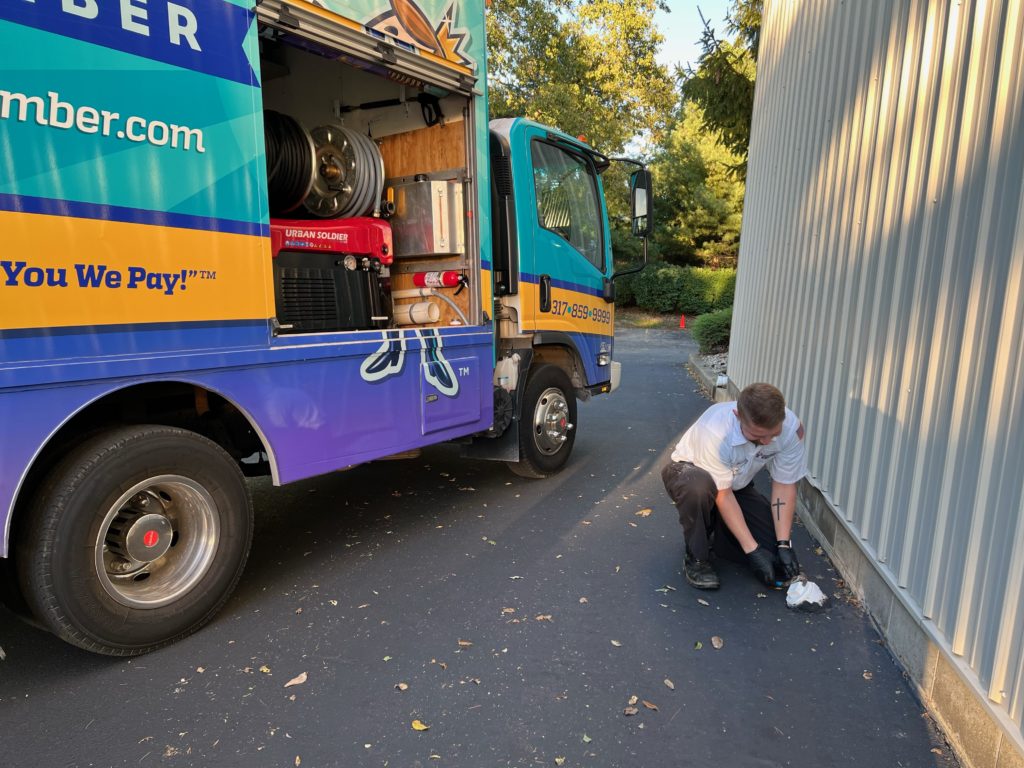The best case scenario? For an easy clog, your plumber may get the job done in mere minutes. For a more stubborn or deep-seated clog, the process may take multiple hours.
If you’re dealing with a stubborn household clog, it may be time for you to enlist a professional plumbing company to come help. There are a number of methods that plumbers might use to alleviate a clogged drain or pipe, but the most common method is to use drain snakes.
But exactly what is a drain snake? And as a homeowner, what should your expectations be in terms of timeline and cost?
Here are a few guidelines about drain snakes from the Carter team.

What are Drain Snakes?
A drain snake is a long, flexible cable, usually made from some kind of metal, with an auger/spring at one end and a handle at the other end. Also known as a plumber’s snake, this tool can be used to plumb your drain pipe or household plumbing system, breaking up and dislodging any clogs without the need for abrasive chemical drain cleaners.
Plumbing snakes are generally considered the first recourse for clogged drains, though hydro jetting may be necessary for more severe and comprehensive issues.
How Long Does it Take to Snake a Drain?
Homeowners will naturally wonder how long it will take to get their drain unclogged, especially if their plumber is charging an hourly rate.
“It will depend on the clog or blockage,” comments Lisa Carter of Carter’s My Plumber. “Soft clogs like toilet paper or food generally go pretty quick but roots or grease can take much more effort.”
The best case scenario? For an easy clog, your plumber may get the job done in mere minutes. For a more stubborn or deep-seated clog, the process may take multiple hours.
Can I Use a Plumbing Snake Myself?
You can always buy small plumbing snakes at the hardware store, and try to eliminate the problem yourself. If the clog is close to the drain, and if it isn’t too severe, you’ll probably be able to dislodge it without the need to call a professional plumber.
For deeper and more stubborn clogs, however, these store-bought plumbing snakes may not reach long enough, and they certainly won’t offer the same power as a mechanical snake, which is what a professional plumber will use. For these instances, you’ll likely want to call in the pros.
Additional Questions About Using a Drain Auger
How hard is it to snake a drain?
This is dependent on the access to the drain. Clean outs are always the best option whether inside or outside.
What is the average cost to snake a drain?
The drain cleaning cost is variable, depending on the location of the clog, ease of access, and severity, among other factors. According to Carter, the average cost for drain snaking is around $350.
How do plumbers clear clogged drains?
There are a number of methods that professional plumbers might use, but the most common tools include a drain snake, hydro jetter, or sometimes just a good old-fashioned plunger.
Can a drain snake break a pipe?
In rare cases yes, but very rare.
Can plunging make a clog worse?
No, but it won’t always get the clog cleared. Sometimes you need the professionals!
What if using a drain snake doesn’t work?
We would suggest a jet. High pressure water jetting will often remove debris from the line a cable just can’t.
Should I use Drano or a drain snake first?
Never use Drano! It is an acid based chemical that is very harmful to plumbing fixtures. Always cable, plunge, or jet!
How many times do you have to snake a drain?
Depends on the blockage. Sometimes once will do, sometimes it takes multiple passes.
How do you unclog a main house drain?
Our first suggestion is always the jet. It’s more expensive but more effective on removing blockages, and not leaving anything in the line.
How do you know if your main line is clogged?
You will have backups in toilets, showers, bathtubs, sinks, or floor drains. So it’s important to avoid any bad kitchen sink smell. Sometimes the sewage will come out of the outside clean out if there is one.
How much will a plumber charge to unclog a kitchen sink?
It’s a charge of $300 to go through a kitchen sink drain. That includes taking apart and reinstalling pipes.
How can I prevent clogs in my sewer lines?
This is an area where an ounce of prevention is worth a pound of cure. Be careful about overloading garbage disposals, brushing food particles into the trash whenever possible. Clean out your drains regularly. And, consider placing protective screens over your drains to prevent too much hair buildup.



